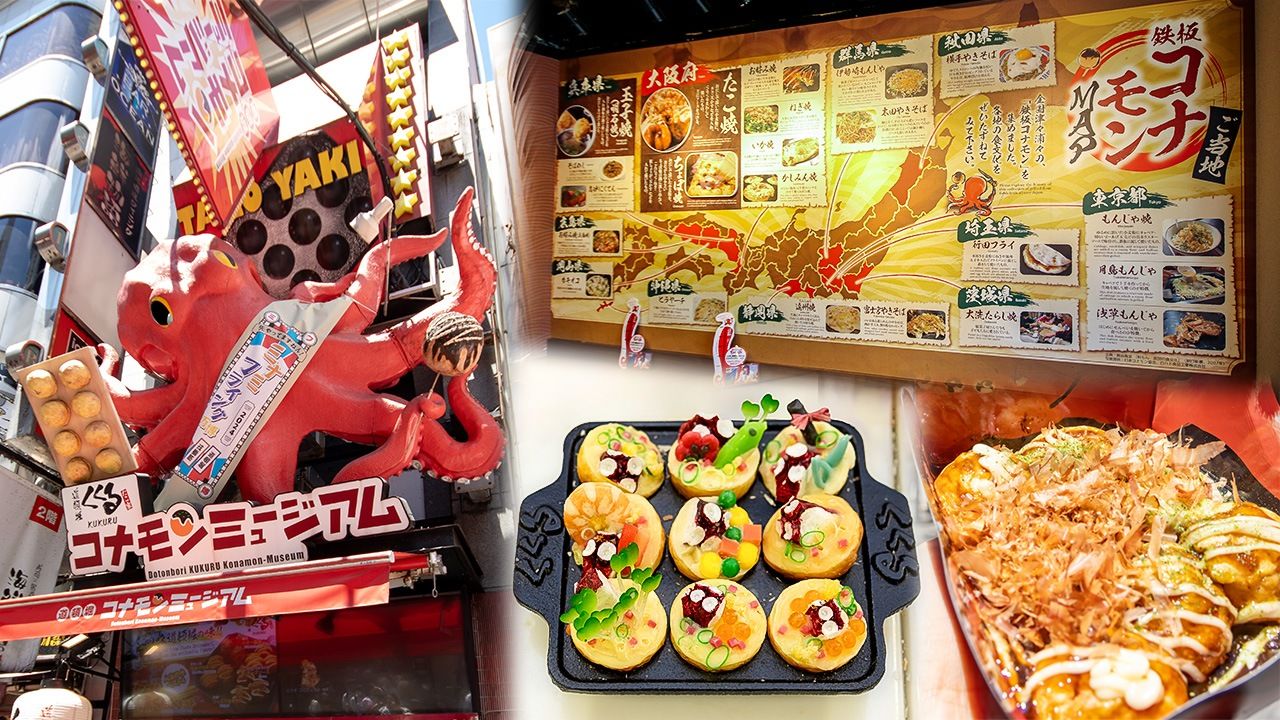
Dive into “Takoyaki” History and Culture at Dōtonbori Kukuru Konamon Museum
Guideto Japan
Food and Drink Travel- English
- 日本語
- 简体字
- 繁體字
- Français
- Español
- العربية
- Русский
Forty Years in the Birthplace of Takoyaki
From okonomiyaki to yakisoba, takoyaki to gyoza, even udon and ramen . . . To the people of Naniwa, an old name for the Osaka region, these wheat-flour-based foods fall into the beloved class of konamon, literally “flour stuff.” The leader of the konamon pack, though, has to be takoyaki. The octopus-dumpling dish is an enduring regional favorite, made in a special iron griddle with hemispheric dimples. The dimples are coated with oil and filled with batter, and bits of octopus (the tako of the name), pickled ginger, chopped negi leeks, and even cheese and sausage bits are dropped in to fill the resulting balls with flavor. An additional layer of batter is poured on top and they are fried and skillfully rotated in the griddle until they are perfectly browned spheres. This favorite of the common people is so popular there, the saying is “There’s not a house in Osaka without a takoyaki griddle.”
The Dōtonbori district of Osaka is a konamon lover’s paradise, with a cluster of about 30 takoyaki stands and people lining the streets spearing the balls from takeaway packs. This area was the birthplace of the dish in the 1930s, and one of today’s takoyaki stars, Takoya Dōtonbori Kukuru, opened up on the Dōtonbori Shopping Street in 1985. The massive model of a squirming octopus that serves as the shop sign leaves an impression, but it’s the flavor that keeps customers coming back. The crisp-outside, creamy-inside texture and the big chunks of plump octopus have made addicts of the people of Naniwa. The reputation has spread nationwide, and there are now 52 branches across Japan.
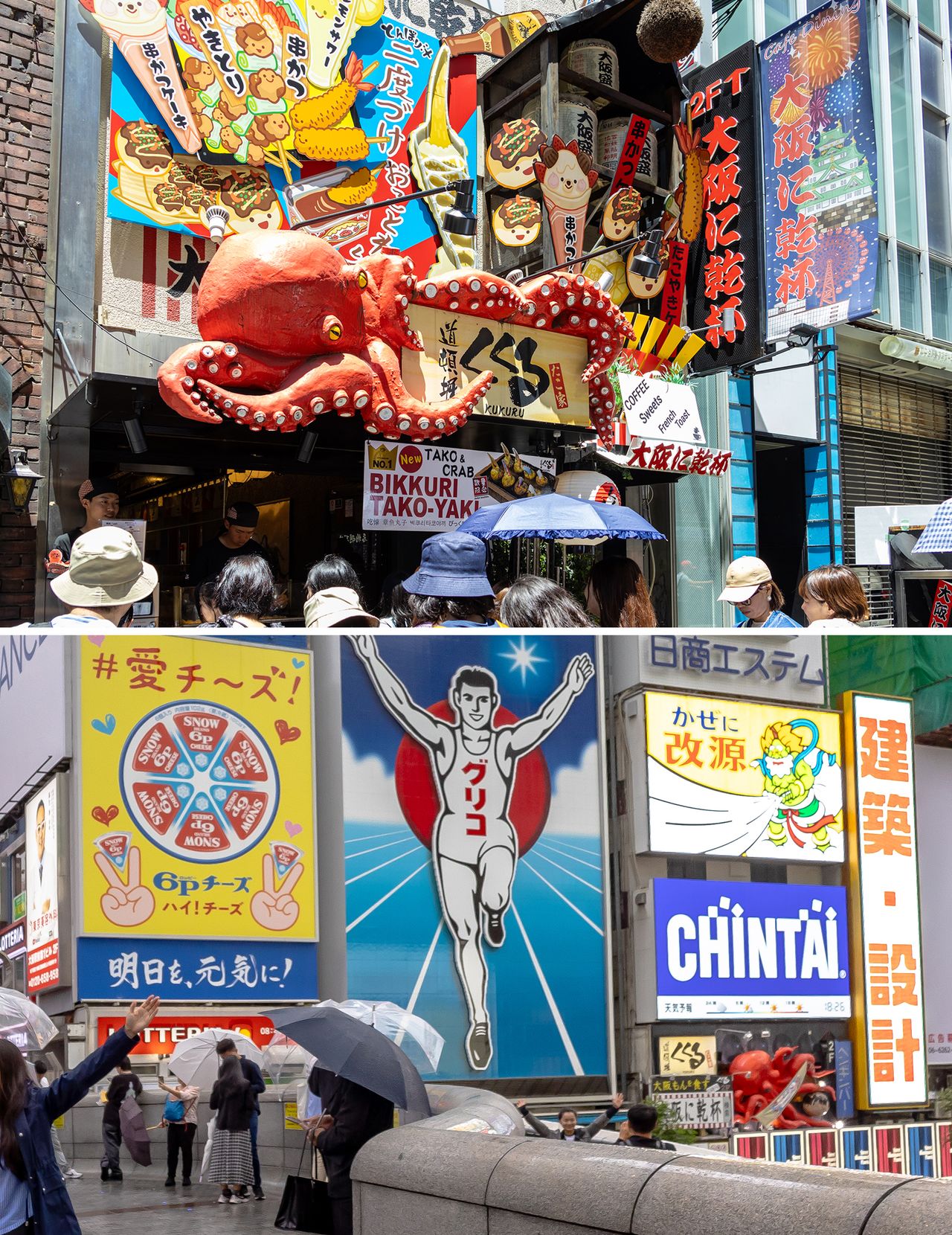
The Kukuru main shop is marked by a massive octopus sign (above) and another is clearly visible from the bridge Ebisubashi. (© Nippon.com)
When people stop for photos with the famous Glico runner sign, the crimson octopus is a common photobomb to the right. This is actually the rear of the shop, meaning that people don’t just line up in front of Kukuru, the octopus calls them to the back, as well.
In 2011, Kukuru opened its flagship shop Dotonbori Kururu Konamon-Museum 100 meters to the east of the main shop, right in the middle of a dining industry battleground. It’s an experiential food theme park where you can not only eat takoyaki, but even get expert instruction in making it yourself while learning about the history and culture of konamon cuisine.
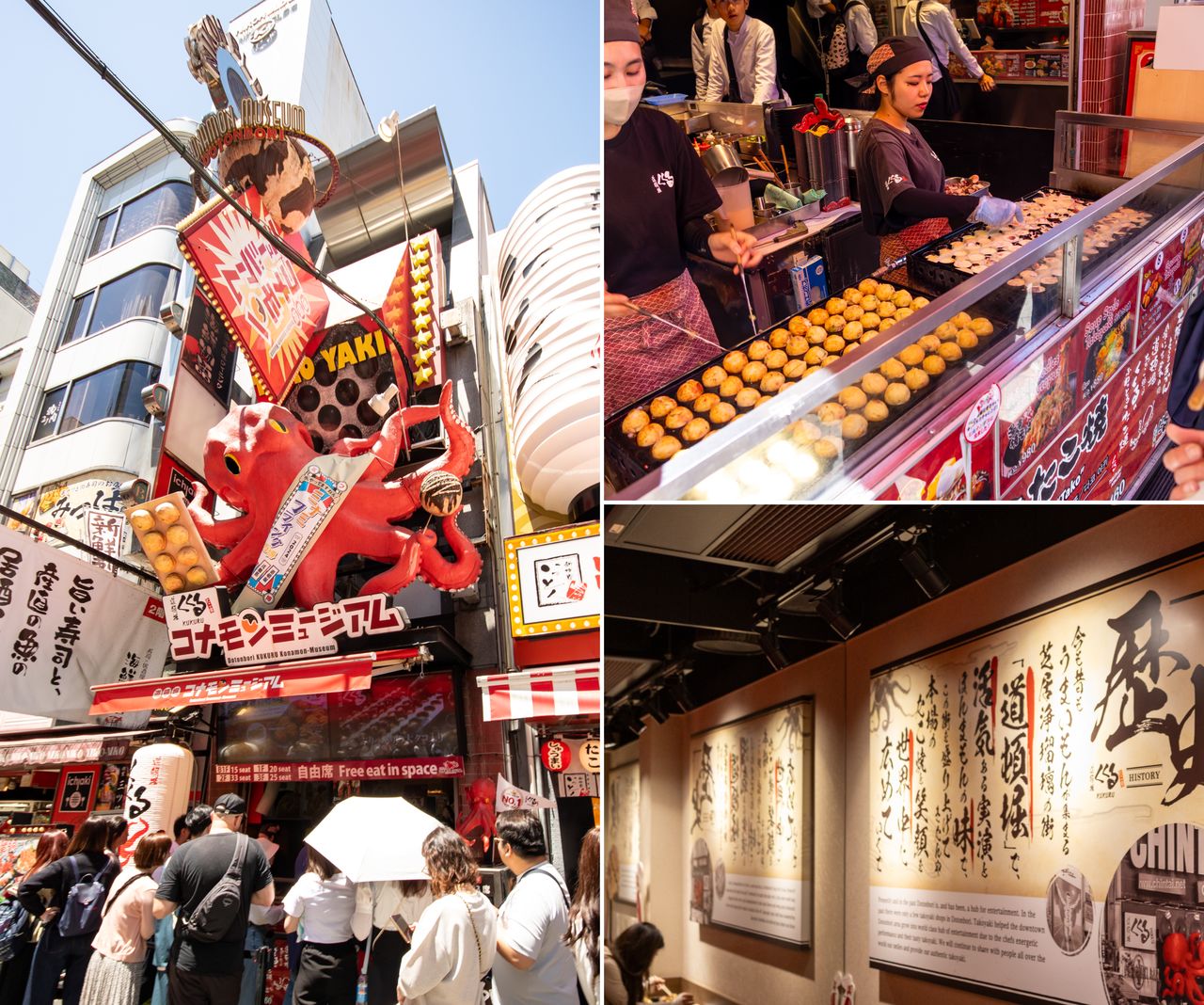
Standing in the middle of a line of shops with their own 3D signs, the museum is another target for long lines. Panel displays inside introduce konamon food culture. (© Nippon.com)
Fun to Learn, Satisfying to Eat
The museum has three floors above ground and one below. The sales counter at the entrance fills the air with an enticing aroma that encourages hungry diners to line up. The dining spaces on the first and second floors are decorated with panels packed with konamon trivia. Reading them all over your snack or meal could make you a konamon expert.
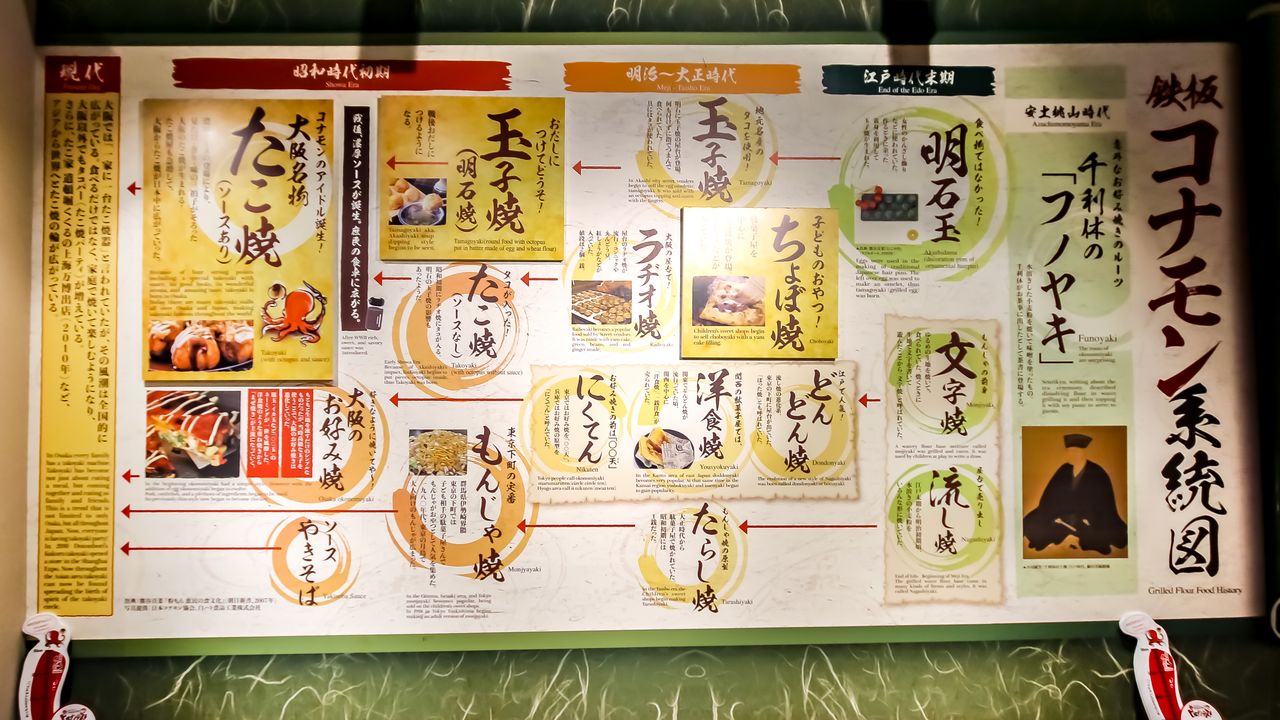
The building is filled with konamon trivia, such as the different historical roots of similar dishes. (© Nippon.com)
According to the Griddle Konamon Flow Chart, the roots of takoyaki go back to a dish called rajioyaki, a popular one at Osaka’s street stalls in the early Shōwa period (1926–1989). The name was adopted from the latest fad, the radio, and used ingredients like beef tendon and konnyaku (konjac). The later addition of octopus was influenced by a popular local dish in nearby Akashi, Hyōgo Prefecture, known as Akashiyaki.
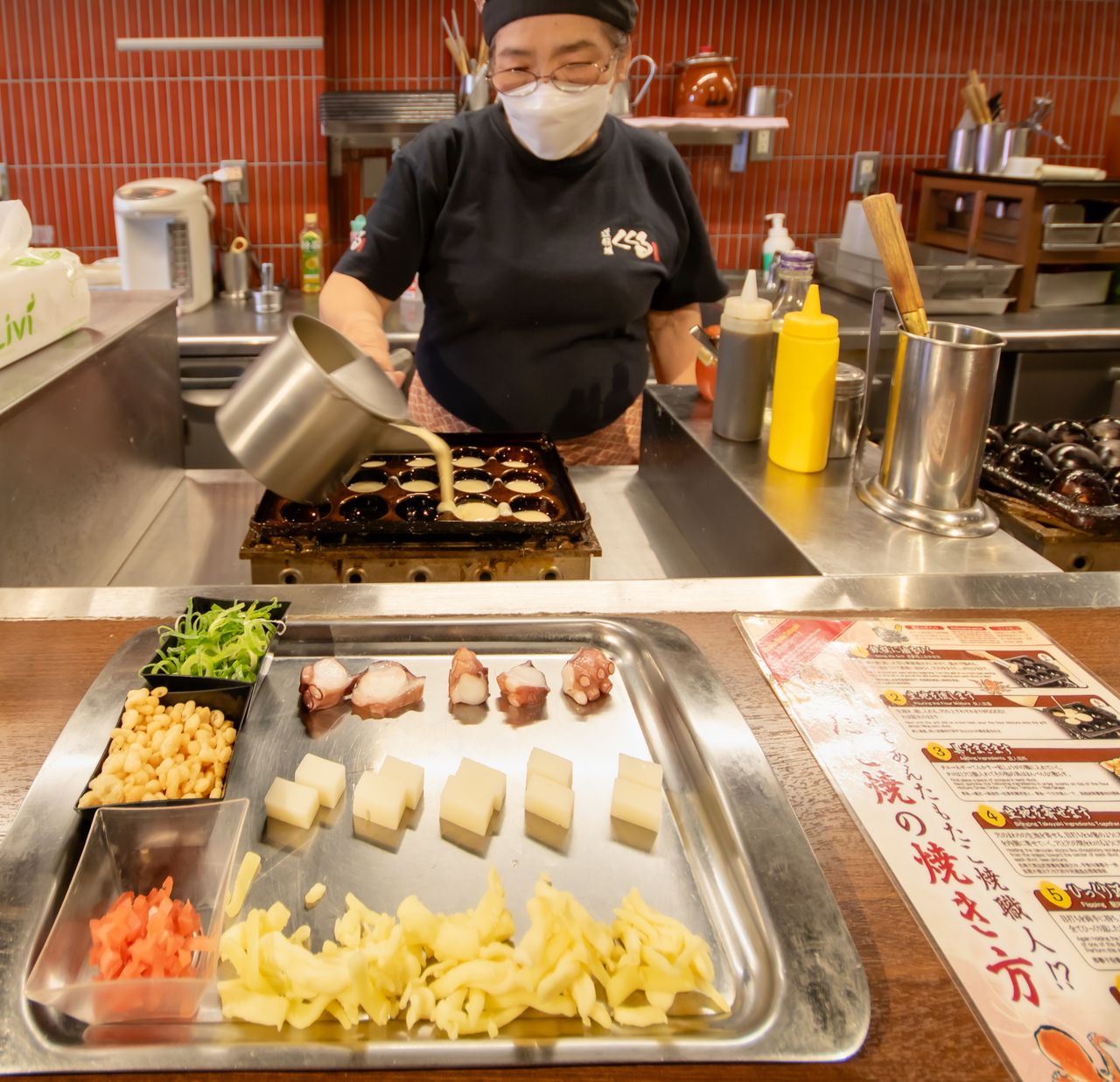
A personal lecture on expert skills. The chef is there to help out in case of trouble, so even cooking beginners can join with confidence. (© Nippon.com)
Professional Kukuru chefs offer lessons at a face-to-face counter. The process starts with pouring batter into eight of the griddle dimples, then adding your filling of choice. Next, adding batter as needed, you can choose a flavoring touch like pickled ginger or negi. The key is to catch any batter overflow as it hardens and curl it back into the dimple. As the batter hardens, you spin it with skewers to create spheres and then just wait for them to brown.
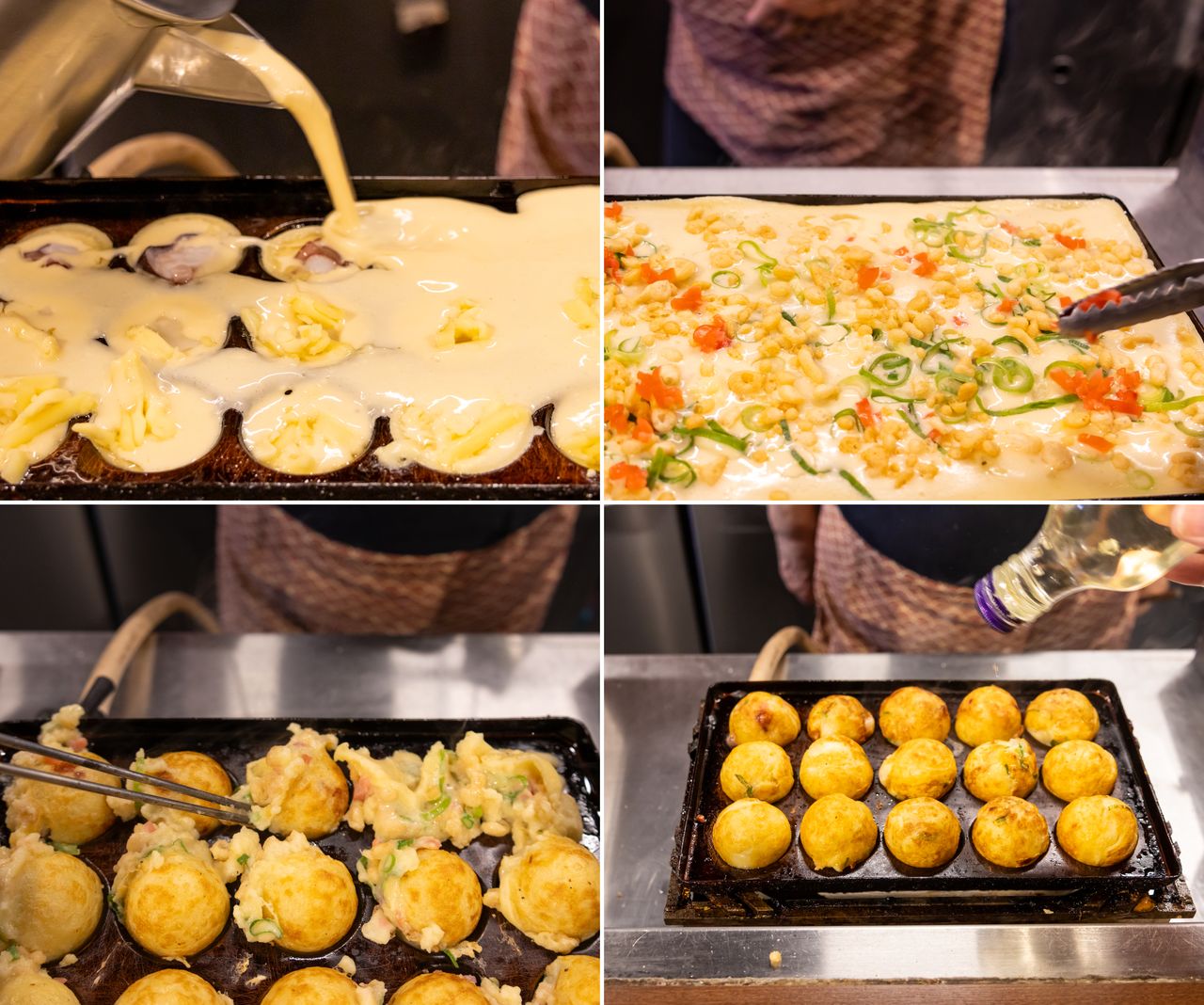
Adding the batter in two separate pours and avoiding any pressure when turning the balls are the keys to a light, fluffy texture. One Kukuru secret is punching up the aroma by adding white wine. (© Nippon.com)
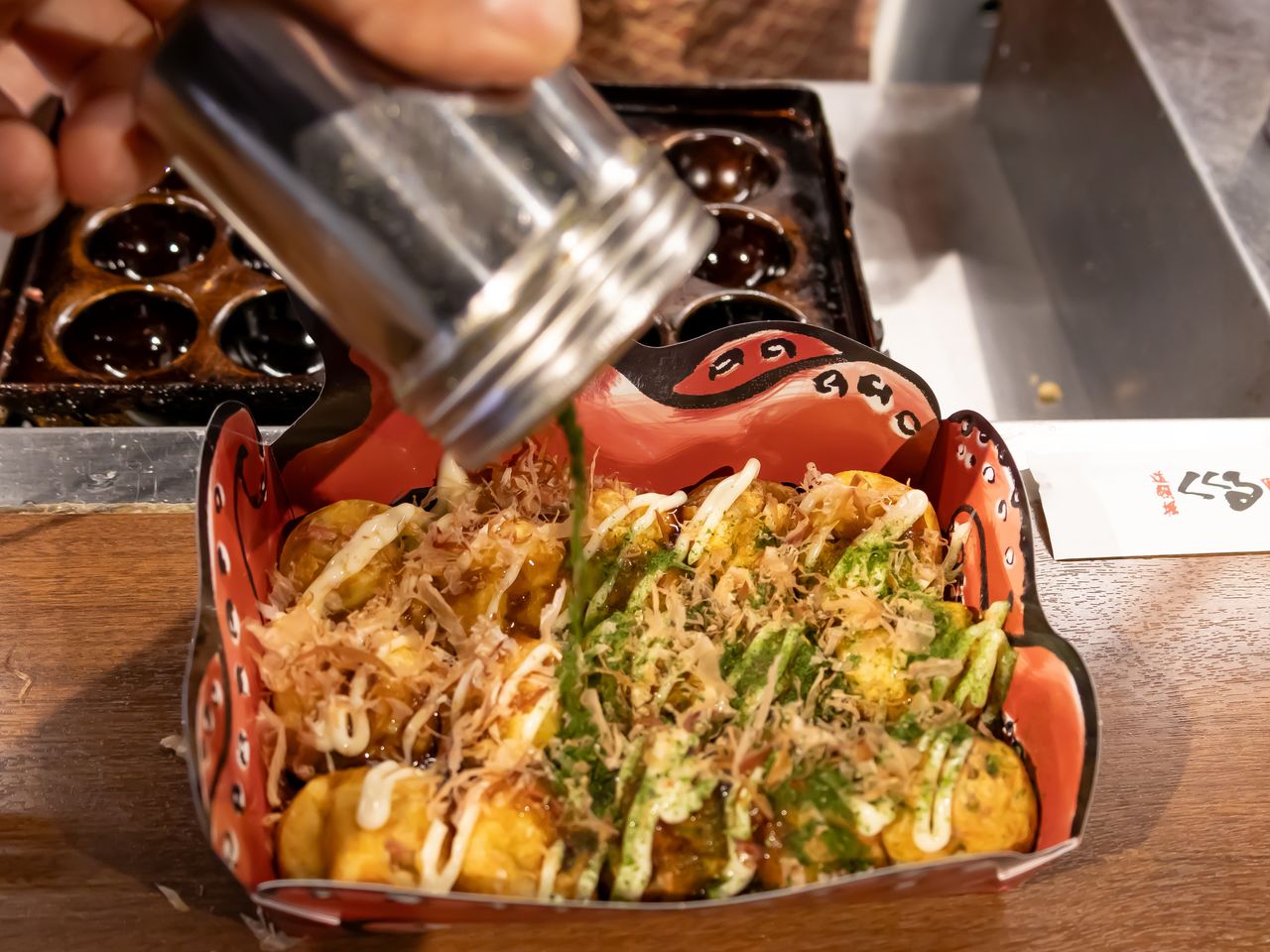
Visitors can feel like a true takoyaki chef using the same ingredients and tools as the pros. (© Nippon.com)
Using a professional grade griddle, the shop’s secret batter mix, and skills taught one-on-one by a professional chef almost guarantee a good result, and they offer a special headband as proof of passing their takoyaki professional “certification.” And once you’ve mastered the skills here, you can take your home takoyaki parties to a whole new level.
The visitor’s notebook at the shop counter is filled with messages in different languages, with sentiments like “I never knew octopus could be this tasty!” or “I want to try making it when I return to my home country.” Staff say they get a lot of visitors from China, Korea, and Southeast Asia, with Western countries filling out the list. The shop welcomes visitors from abroad, and one instructor explained, “We get the message across with gestures and body language, and a few English phrases such as ‘Like this!'”
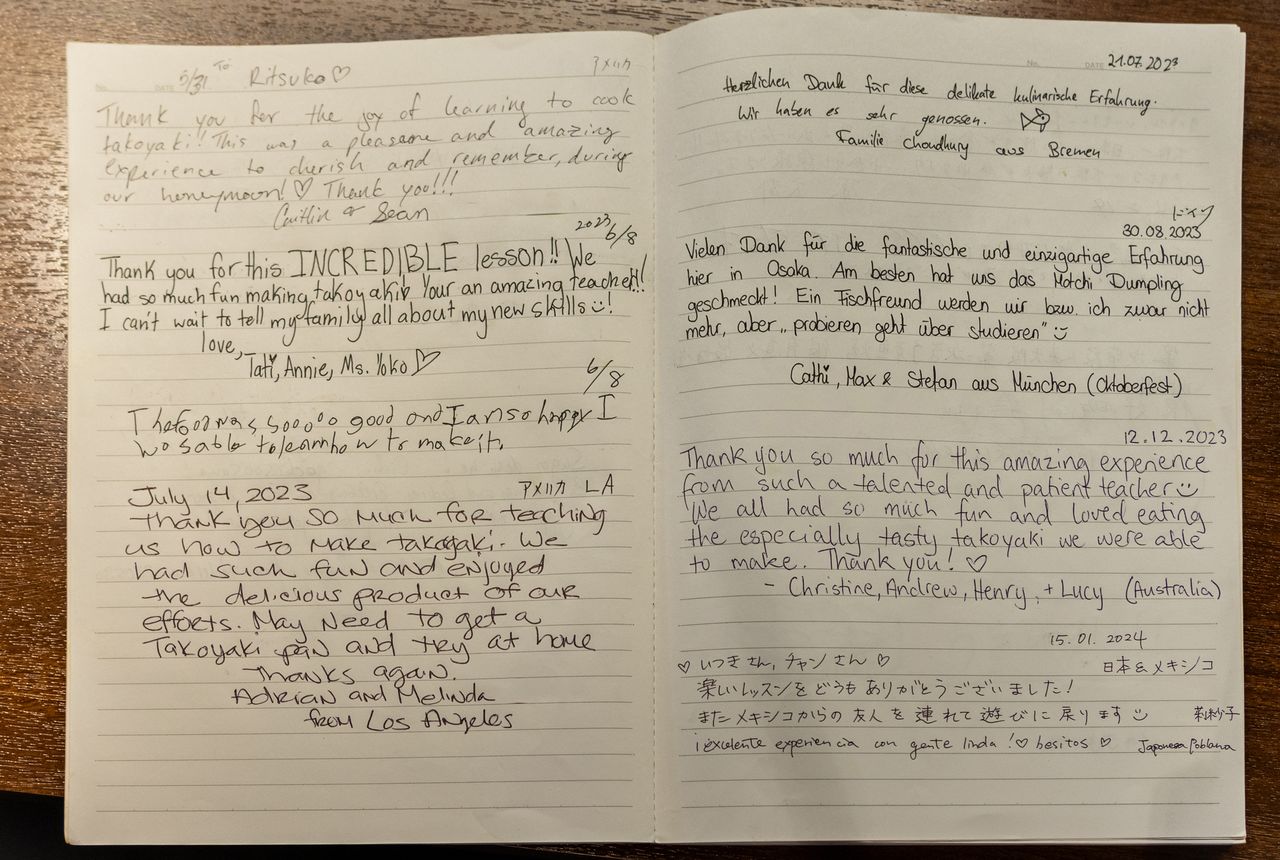
The notebook is an international record. (© Nippon.com)
The third floor has a section where you can try making takoyaki food models, a hit with children. The instructor says, “You just pour molten wax into a model, so there are fewer possibilities of mistakes than with the real thing. Then, you adjust the colors and add toppings to make your own unique piece. We get a lot of elementary school students coming during summer holidays to use it for their summer project homework.” Such wax food models are a unique part of Japanese culture and are growing very popular overseas, too. Staff say they get a lot of people coming on the recommendations of friends.
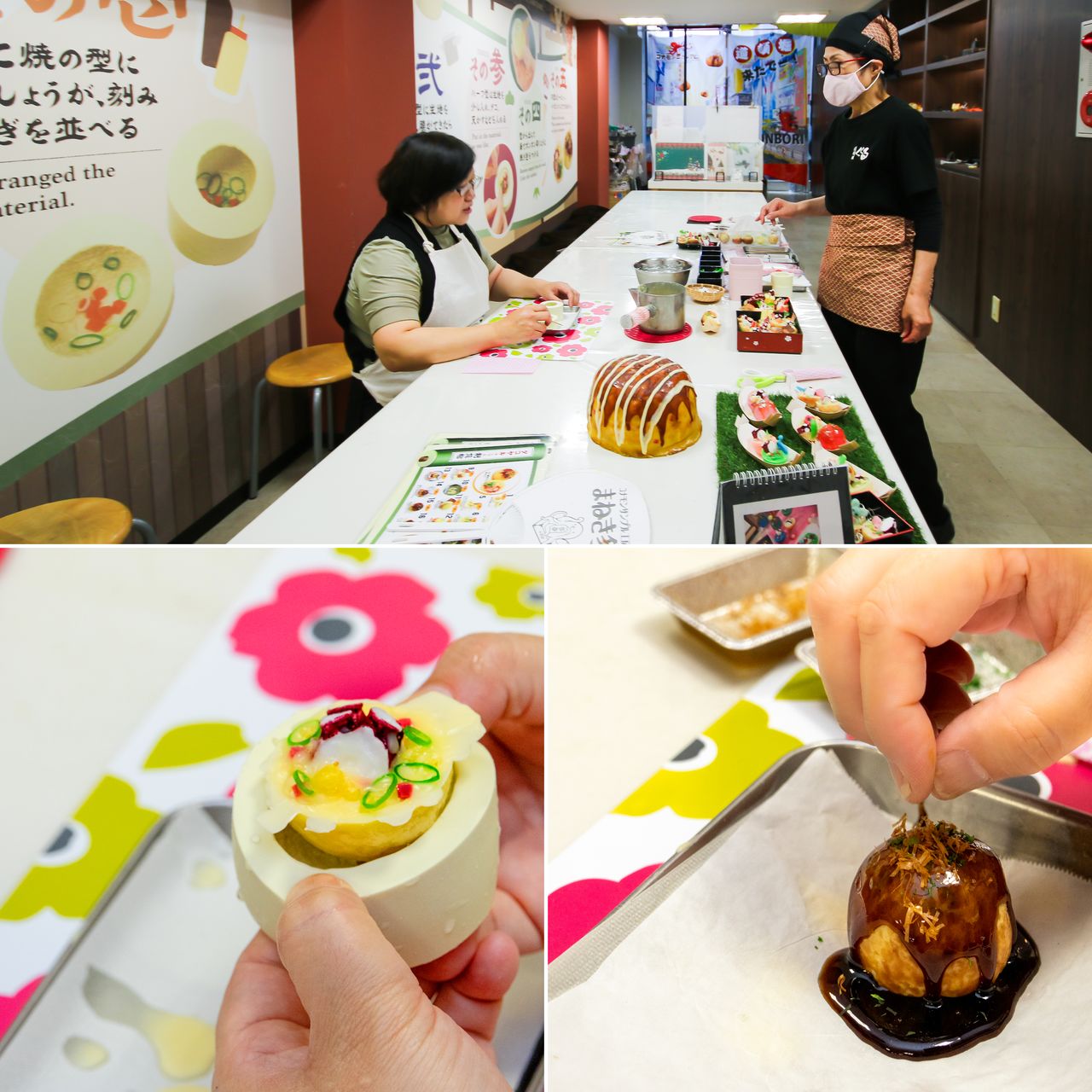
These models are made by molding wax melted in hot water, but look good enough to eat. (© Nippon.com)
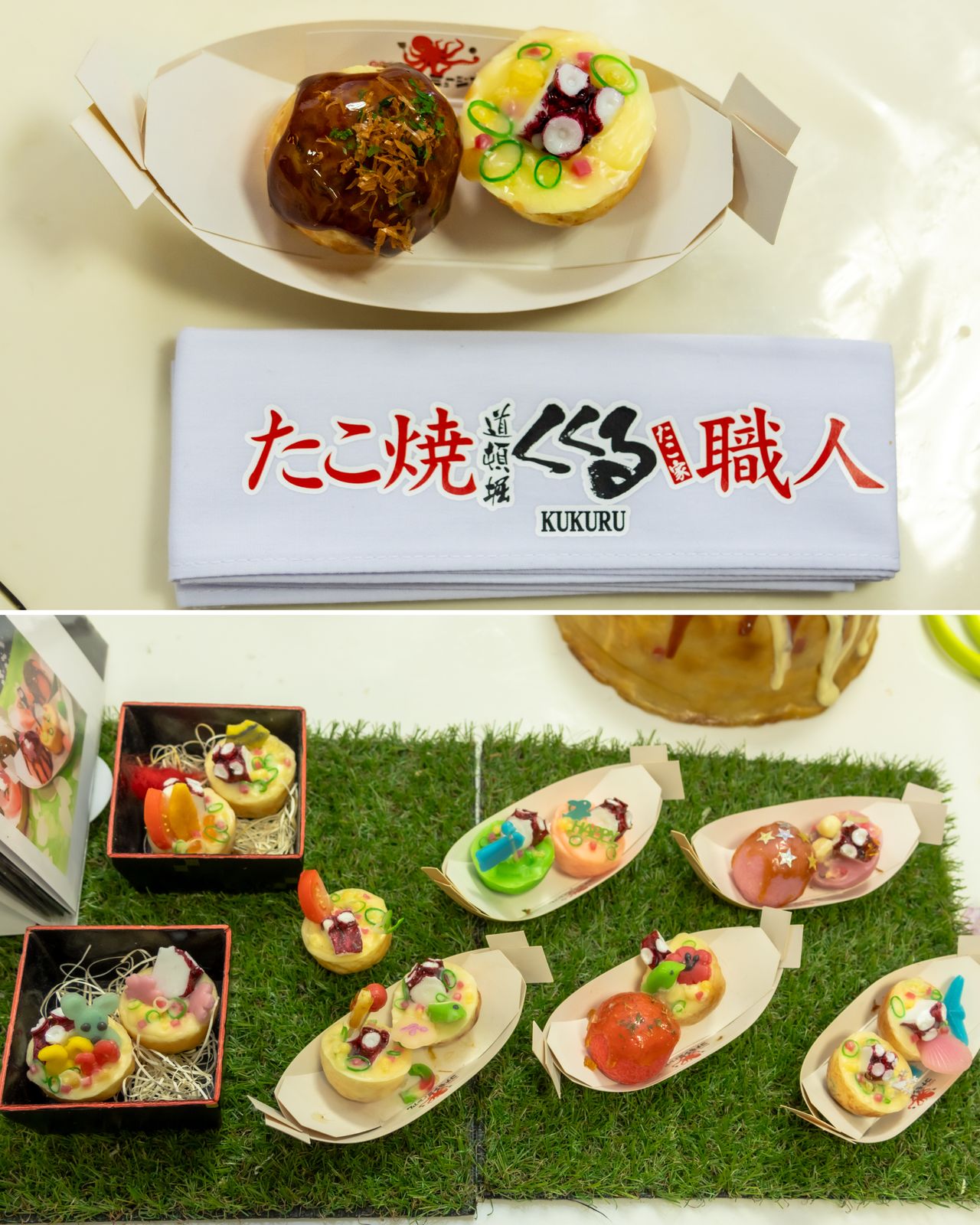
The decorations allow for massive variety. When you finish, you get a commemorative headband. (© Nippon.com)
Sharing Takoyaki at the World’s Fair
The sound of a chorus singing “Taaakoyaki! Taaakoyaki!” fills the air inside. It follows the familiar sound of the Hallelujah chorus from George Handel’s famous Messiah oratorio, and the resulting Takoyaki Hallelujah is so catchy people start whistling along almost by reflex. The song was made to advertise Kukuru’s booth at the 2010 Shanghai World Expo. They ended up selling 50,000 servings in six months, sparking a boom. That same year, Kukuru expanded into the Chinese market.
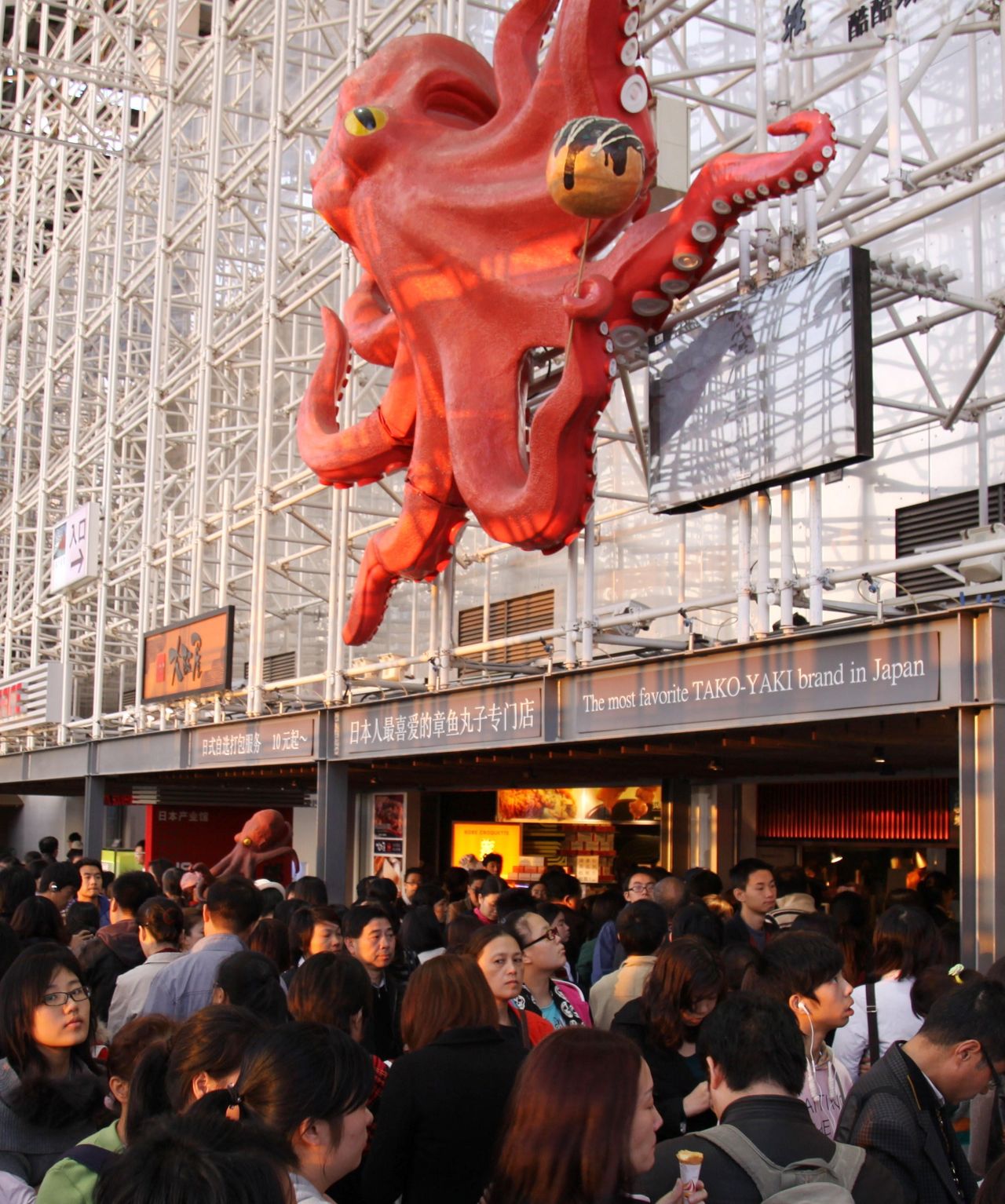
The Shanghai World Expo was Kukuru’s third appearance at a global gathering, after the Osaka International Garden and Greenery Exposition in 1990 and the Aichi World Expo in 2005. Taken on October 30, 2010, in Shanghai. (© Jiji)
And, of course, the shop will be at the 2025 World Expo in its hometown of Osaka. They will welcome the people of the world with delicious takoyaki packed with Japanese ingredients and expert skill.
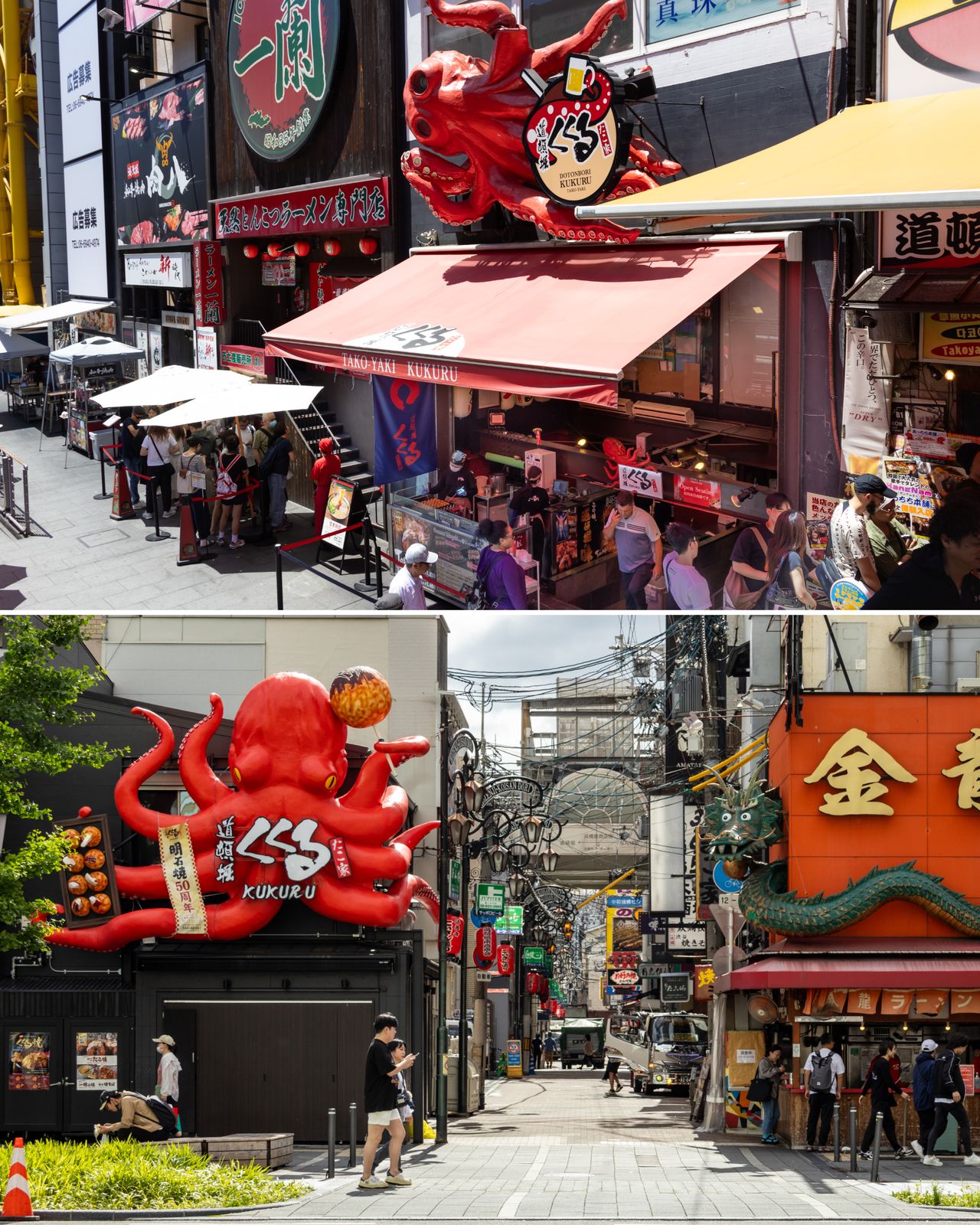
Will this scarlet octopus, which has already spread to nearby Soemonchō and the Midōsuji Minami branches, spread its tentacles across the globe? (© Nippon.com)
Please see the Konamon Museum website (in Japanese) for details.
(Originally published in Japanese. Reporting and text by Nippon.com.)
